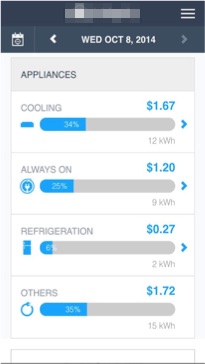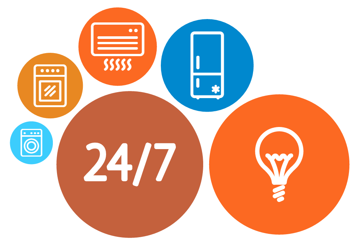Image courtesy Onzo Ltd.
What is NILM anyway?
Soon electric bills may not only present customers with their current balance and kilowatt-hour consumption, but a customized device-by-device breakdown of their electricity consumption and costs. Non-intrusive load monitoring (NILM) technology breaks down whole-house electricity consumption data to the appliance level, allowing consumers to understand which appliances contribute the most to their bills, and thereby manage their consumption more effectively. NILM analyzes smart meter data or measurements from other sensors to disaggregate whole-home electricity use data into various loads of interest, without the need for additional sub-metering. Those wishing to venture into NILM must find the right balance between accuracy, technical complexity, achievable savings, and cost.NILM technologies typically identify loads such as air conditioning, pool pumps, furnaces, clothes washers, and refrigerators. Some advanced products use high-performance sensors to drill down further, yielding energy use data for up to 100 appliance types including toasters and computers.

Mobile NILM app showing estimated consumption by end use category.
Armed with deeper insights on the individual loads in a home, NILM vendors claim to spur greater customer engagement and energy savings through personalized energy efficiency recommendations, relayed to the consumer through a simple enhanced paper bill or more commonly through a web or mobile app.
Dozens of companies are currently developing solutions for the North American market, ranging from lower cost SaaS offerings to more expensive in-home hardware solutions. Pilots to date with software-only solutions have yielded bill savings from 4 to 8%, but we believe that next-generation hardware solutions could deliver savings in excess of 10% through more targeted and relevant recommendations. Clearly, those wishing to venture into NILM must find the right balance between accuracy, technical complexity, achievable savings, and cost.
Our Work
Since 2015, Xergy has been helping its clients understand the actual energy, demand, and customer engagement benefits of NILM technologies and assess whether they are a useful addition to their suite of energy efficiency and customer engagement programs. In 2017, we will continue assisting the National Rural Electric Cooperatives Association (NRECA) with the management and evaluation of a NILM pilot spanning multiple distribution coops across the country and thousands of households.

